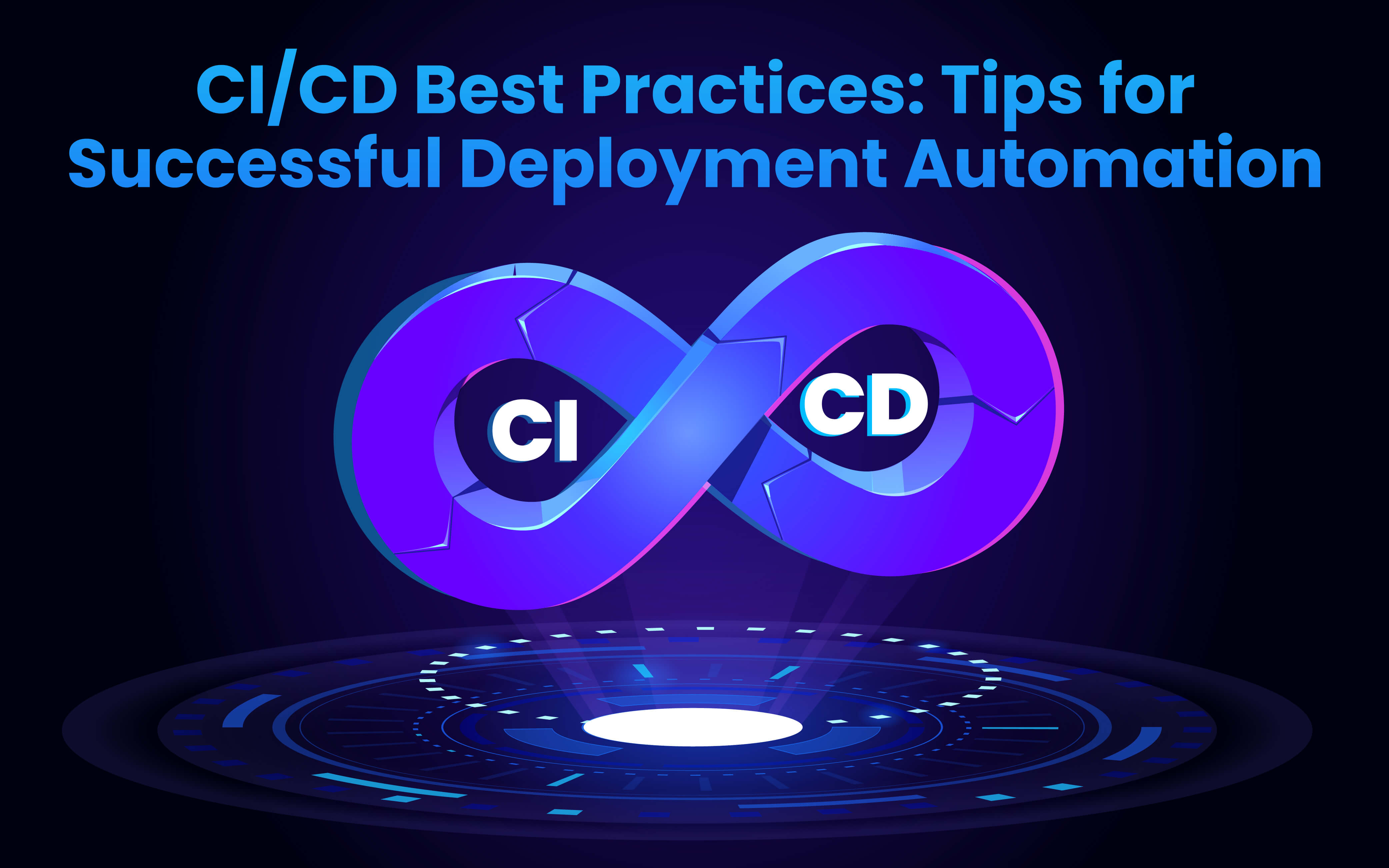Blogs
To know about all things Digitisation and Innovation read our blogs here.
Automation
CI/CD Best Practices: Tips for Successful Deployment Automation
SID Global Solutions
16 March 2023

CI/CD (Continuous Integration/Continuous Deployment) is a software development methodology that aims to reduce the time taken between code writing and deployment. This methodology involves automating the process of building, testing, and deploying code changes to ensure that software is delivered quickly and reliably.
CI/CD best practices help teams to deliver high-quality software at a faster pace. In this comprehensive guide, we will explore the tips for successful deployment automation using CI/CD best practices.
Also Read: Navigating the Pitfalls of Legacy Systems in Digital Transformation
Keep the Pipeline Simple: The first tip for successful deployment automation is to keep the pipeline simple. Complexity can be the enemy of automation, and a complex pipeline can increase the chances of errors and slow down the deployment process. Keep the pipeline simple by breaking it down into small, manageable steps.
Each step of the pipeline should be clear and concise, and should have a clear purpose. This will help to ensure that each step is executed efficiently and effectively.
Use Version Control: Version control is an essential tool for successful deployment automation. It helps to keep track of changes to the codebase, and ensures that all changes are tracked and tested before they are deployed.
Using version control allows you to easily roll back changes if they cause problems, and helps to ensure that all changes are properly documented.
Automate Testing: Automated testing is a critical part of successful deployment automation. It helps to ensure that code changes are tested thoroughly before they are deployed, and reduces the risk of errors and bugs.
Automated testing can include unit testing, integration testing, and acceptance testing. These tests can be run automatically as part of the deployment pipeline, and can provide feedback on the quality of the code changes.
Use Containers: Containers are a popular technology for successful deployment automation. They provide a way to package and deploy software applications in a consistent and reproducible way.
Containers can be used to deploy applications across multiple environments, and can help to ensure that the application runs consistently across different systems.
Also Read: The Role of Serverless Architecture in DevOps and Agile Development
Implement Continuous Monitoring: Continuous monitoring is an important part of successful deployment automation. It helps to ensure that the application is running smoothly and provides feedback on the performance of the application.
Continuous monitoring can include monitoring of application logs, system metrics, and user feedback. This feedback can be used to identify issues and improve the performance of the application.
Use Infrastructure as Code: Infrastructure as Code (IaC) is a method for managing infrastructure in a repeatable and automated way. IaC uses code to manage infrastructure, which can be version-controlled and automated.
Using IaC helps to ensure that infrastructure changes are tested and validated before they are deployed, and reduces the risk of errors and downtime.
Collaborate and Communicate: Collaboration and communication are essential for successful deployment automation. Teams should work together to ensure that the pipeline is running smoothly, and that issues are addressed quickly and efficiently.
Communication should be open and transparent, and should include regular updates on the status of the pipeline and any issues that arise.
Implement Rollback Strategies: Rollback strategies are an important part of successful deployment automation. They provide a way to quickly and easily revert to a previous version of the application if a new version causes issues.
Rollback strategies can include using version control to revert to a previous version of the code, or using backups to restore a previous version of the application.
Use Continuous Integration: Continuous Integration is an important part of successful deployment automation. It involves integrating code changes into a shared repository frequently, and ensuring that each integration is tested and validated.
Continuous Integration helps to ensure that code changes are validated before they are integrated into the application, and reduces the risk of conflicts and errors.
Also Read: How AIOps and DevOps Enable Successful Digital Transformation?
Use Continuous Deployment: Continuous Deployment is the practice of automatically deploying code changes to production as soon as they are validated. It reduces the time between code changes and deployment, and helps to ensure that the application is always up-to-date.
Continuous Deployment can help to ensure that new features and bug fixes are released quickly, and can provide users with a better experience.
Monitor and Improve Performance: Monitoring and improving performance is an ongoing process in successful deployment automation. It involves continuously monitoring the application, identifying bottlenecks, and improving the performance of the application.
Performance monitoring can include monitoring system metrics, application logs, and user feedback. Improving performance can involve optimizing code, scaling resources, or using caching to reduce load times.
Implement Security Measures: Security is an essential part of successful deployment automation. It involves implementing measures to ensure that the application is secure from potential threats.
Security measures can include using encryption to protect sensitive data, implementing access controls to restrict access to certain parts of the application, and using secure coding practices to reduce the risk of vulnerabilities.
Use DevOps Principles: DevOps principles are an important part of successful deployment automation. DevOps is a methodology that focuses on collaboration, communication, and automation between development and operations teams.
DevOps principles can include using agile development methodologies, implementing continuous integration and deployment, and using automation tools to streamline the deployment process.
Implement Disaster Recovery Strategies: Disaster recovery strategies are an important part of successful deployment automation. They provide a way to quickly recover from system failures or disasters, and ensure that the application is available to users.
Disaster recovery strategies can include using backups to restore data, using failover systems to ensure that the application remains available in the event of a failure, and implementing redundancy to reduce the risk of downtime.
Continuously Improve the Process: Continuous improvement is an important part of successful deployment automation. It involves continuously evaluating the deployment process and identifying areas for improvement.
Continuous improvement can include implementing new tools or processes to improve efficiency, optimizing existing processes to reduce errors and downtime, and seeking feedback from users to identify areas for improvement.
Also Read: Azure DevOps Services Deployment Strategies: Best Practices for Success
Conclusion
CI/CD best practices are essential for successful deployment automation. By keeping the pipeline simple, using version control, automating testing, using containers, implementing continuous monitoring, using infrastructure as code, collaborating and communicating, implementing rollback strategies, using continuous integration and deployment, monitoring and improving performance, implementing security measures, using DevOps principles, implementing disaster recovery strategies, and continuously improving the process, teams can deliver high-quality software at a faster pace.









